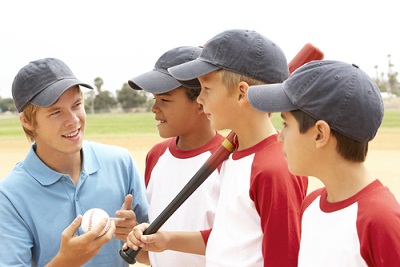Teaching Youth Football Coaches About Player Safety Reduces Injuries
By Dan Peterson, TeamSnap's Sports Science Expert
Football is a violent game. Despite helmets and pads, players repeatedly colliding at full speed creates concussions and broken bones. Trying to reduce these injuries while staying true to the game requires coach and player education about proper form, properly fitted equipment and safety monitoring throughout the season. A recently published study looked at two of these education programs, USA Football’s Heads Up and Pop Warner’s safety instruction and found that these efforts are actually reducing injuries in youth football.
Of course, football coaches and parents want to keep their young players safe while enjoying an inherently physical sport. But many coaches rely on old school practices and techniques that they learned years ago from their mentors. Without an organized approach and the latest science-based curriculum, the same mindset and instruction will put players in unsafe situations.
In 2012, USA Football, supported by the NFL, started the Heads Up safety program to teach coaches, parents and players on six important topics:
- Concussion recognition and response
- Heat preparedness and hydration
- Sudden cardiac arrest
- Proper equipment fitting
- Heads Up tackling technique
- Heads Up blocking technique
In addition, Pop Warner, the nation’s largest youth football association, limited the type and amount of contact for its youth players, including:
- No full speed head-on blocking or tackling drills in which the players line up more than 3 yards apart are permitted.
- Reduce the amount of contact at each practice to a maximum of 1/3 of practice time (either 40 minutes total of each practice or 1/3 of total weekly practice time). In this context, “contact” means any drill or scrimmage in which drills; down line vs. down line full-speed drills; and scrimmages.
After three seasons of these programs, researchers at the Datalys Center for Injury Research and Prevention reviewed actual injury data from the 2014 season for players in four states, Arizona, Indiana, Massachusetts and South Carolina. The youth football players were divided into three groups; those that had no safety education program, those that had only Heads Up safety instruction and those that had both Heads Up instruction and implemented the Pop Warner contact restrictions.
A total of 71,262 athlete exposures were observed by certified athletic trainers. An athlete exposure (AE) is defined as one player completing a single practice or game. During the season, 370 total injuries were reported across the 2,108 players.
For practices, those players with no safety instruction or Pop Warner restrictions suffered an injury rate of 7.32 per 1000 AEs, while those with Heads Up instruction had an injury rate of 2.73 per 1000 AEs. Adding in the contact restrictions reduced the injury rate even more to 0.97 per 1000 AEs.
In game situations, players who had Heads Up instruction and Pop Warner restrictions had an injury rate of 3.42 per 1000 AEs while those teams with no safety instruction had much a much higher injury rate of 13.42.
The research was recently published in the Orthopaedic Journal of Sports Medicine.
"With an estimated three million youth aged 7 to 14 years old playing tackle football each year, preventing injuries is key. Our study showed that kids who received a comprehensive education from a coach had fewer injuries," said Zachary Y. Kerr, PhD, MPH of the Datalys Center for Injury Research and Prevention and lead researcher. “Our findings support the need for additional coaching education and practice contact restrictions. Future research should look at how different programs work at various levels of competition and sports.”
Getting coaches and parents trained on proper fundamentals won’t completely prevent injuries but have now been shown to significantly reduce time away from the game.
NEW! Free Sports Organization Resources
All of TeamSnap's ebooks, articles, and stories in one place. Access Now
Similar Articles:

Let Your Players Be The Coach
By Dan Peterson, TeamSnap's Sports Science Expert. Coaches…
Read More

Teaching Youth Football Coaches About Player Safety Reduces Injuries
By Dan Peterson, TeamSnap's Sports Science Expert …
Read More

Keep Your Eyes (And Your Head) On The Ball
By Dan Peterson, TeamSnap's Sports Science Expert …
Read More
